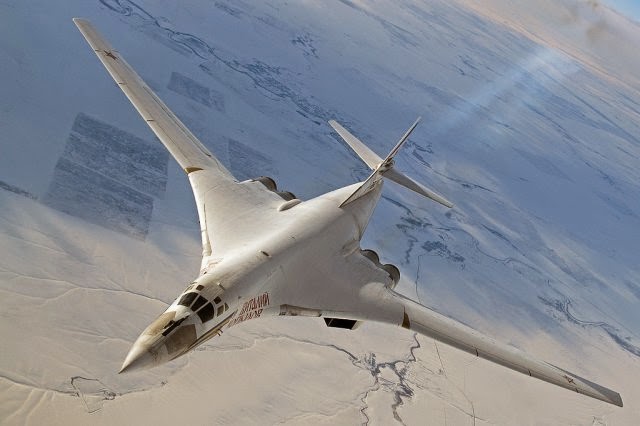What makes an aeroplane beautiful?

The ‘neanderthal B-1B’

The heart-achingly beautiful Tu-160.
“It is unlikely that Keats knew much of Cold War bomber aircraft (probably) but his famous line “Beauty is truth, truth beauty” rings just as true for Mach 2.2-capable commercial airliners as it does for Greek pots.”
If we want to take a firmer, more definitive approach to the matter, as with all things in aviation we must turn to the wisdom of our forebears and of the ancients. It’s evident that the physical appearance of the aircraft plays a role in producing its beauty. As Aristotle describes in his Poetics, “to be beautiful, a living creature, and every whole made up of parts, must … present a certain order in its arrangement of parts”. There is a clear “look” that lends itself to this evocation, something organic. Note the moth-like planform of the Avro Vulcan or the curves and symmetry of the Spitfire vs the angular and brutish lack of appeal of the likes of the F-22 and F-35. Certainly Aristotle could think of beauty as something calculable and mathematic, something you could take in a vacuum, apply a formula to and see if it checks all the boxes. But beauty is an inherently emotional response to an object or vision, and there’s plenty of emotion in aviation.
The Mirage 2000 is the platonic ideal of a delta-winged fighter.
Sadly, this site will pause operations if it does not hit its funding targets. If you’ve enjoyed an article you can donate here and keep this aviation site going. Many thanks
Plato disagreed with Aristotle’s views. For Plato, beauty was an inherently spiritual concept. Taking his concept of beauty from the Symposium, we cannot understand the beauty of an aircraft based purely on its lines, its form, its shape, rather it has to be part of the Form of beauty, an unchanging and eternal truth that defines whether something is beautiful or not. Plato describes the advancement through the realisation of beauty – from love of the physical object, through the to the love of the soul, transcending to the love of knowledge, of laws, to a final understanding and love of Beauty itself, an appreciation of the actual existence of that concept. We sell fantastic high quality aviation-themed gifts here
“Man that Typhoon has an ugly intake!”
The Hush-Kit Book of Warplanes can only happen with your support. Preorder your copy today here.
An aircraft’s looks and the feeling of the freedom that flight offers earthbound humans are one and the same. An ugly aircraft cannot offer us that dream of flight in the same way that a beautiful one can but at the same time that beauty is only derived from that feeling. This could be perfectly encapsulated in the Mirage IV. On the face of it, there are several things that you could say make it less than stunning – the poor positioning of the probe, the harshness of the canopy, the size of the tail. And yet, it is a beautiful aeroplane. Something about the jet scream ‘flight.’ It speaks to us of the joy of riding the clouds, of looking down on the Earth from above, the unbound liberty of taking to the air. The Mirage IV is a beautiful aircraft.

The only difference in appearance between the B-1 and the Tu-160 is the paint job. The lines of both aircraft are essentially identical. Which is easy to understand when you discover the Soviets were trying to build a Red B-1 instead of letting Andre and company design something just as good but with their own flair.
Although they look very similar, the Tu160 is a good 10-20% larger all around.
Mind you, I can’t find any pictures of the two aircraft side by side, which I suspect is intentional, but as to who is keeping them apart I don’t know.